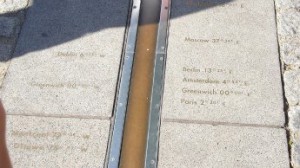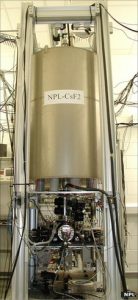Most of us recognise how long an hour, a minute, or a second is, and we are used to seeing our clocks tick past these increments, but have you ever thought what governs clocks, watches and the time on our computers to ensure that a second is a second and an hour an hour?
Early clocks had a very visible form of clock precision, the pendulum. Galileo Galilei was the first to discover the effects of weight suspended from a pivot. On observing a swinging chandelier, Galileo realised that a pendulum oscillated continuously above its equilibrium and didn’t falter in the time between swings (although the effect weakens, with the pendulum swinging less far, and eventually stops) and that a pendulum could provide a method of keeping time.
Early mechanical clocks that had pendulums fitted proved highly accurate compared to other methods tried, with a second able to be calibrated by the length of a pendulum.
Of course, minute inaccuracies in measurement and effects of temperature and humidity meant that pendulums were not wholly precise and pendulum clocks would drift by as much as half an hour a day.
The next big step in keeping track of time was the electronic clock. These devices used a crystal, commonly quartz, which when introduced to electricity, will resonate. This resonance is highly precise which made electric clocks far more accurate than their mechanical predecessors were.
True accuracy, however, wasn’t reached until the development of the atomic clock. Rather than using a mechanical form, as with a pendulum, or an electrical resonance as with quartz, atomic clocks use the resonance of atoms themselves, a resonance that doesn’t change, alter, slow or become affected by the environment.
In fact, the International System of Units that define world measurements, now define a second as the 9,192,631,770 oscillations of a caesium atom.
Because of the accuracy and precision of atomic clocks, they provide the source of time for many technologies, including computer networks. While atomic clocks only exist in laboratories and satellites, using devices like Galleon’s NTS 6001 NTP time server.
A time server such as the NTS 6001 receives a source of atomic clock time from either GPS satellites (which use them to provide our sat navs with a way to calculate position) or from radio signals broadcast by physics laboratories such as NIST (National Institute of Standards and Time) or NPL (National Physical Laboratory).

 Researchers have discovered that the British atomic clock controlled by the UK’s National Physical Laboratory (
Researchers have discovered that the British atomic clock controlled by the UK’s National Physical Laboratory (

